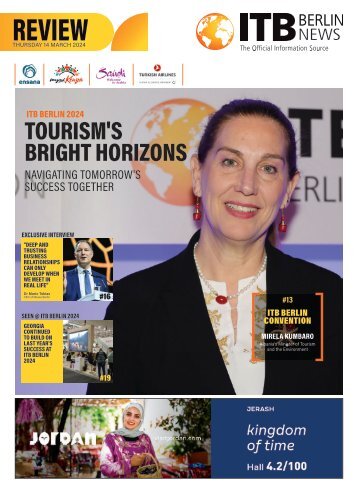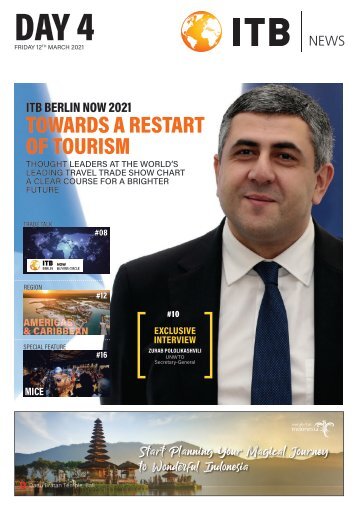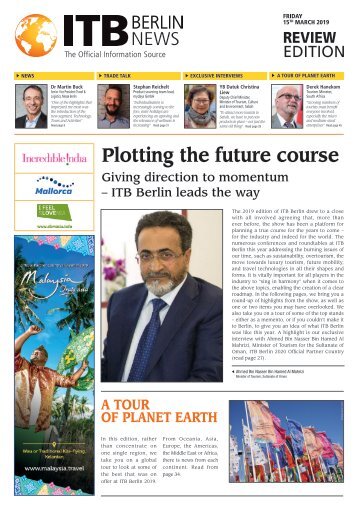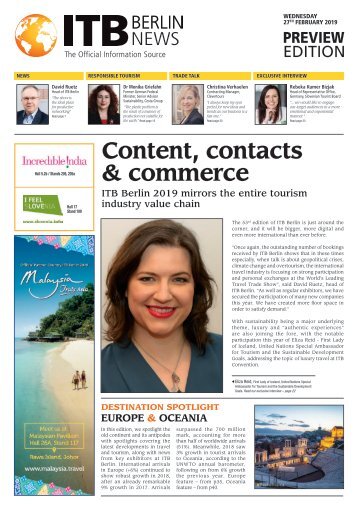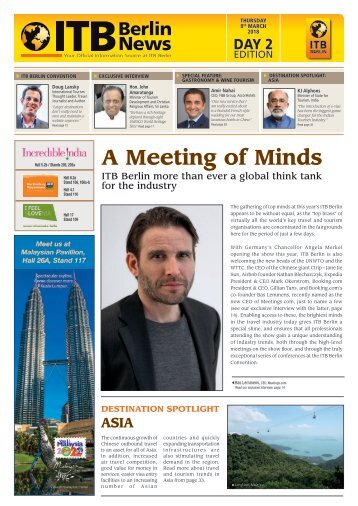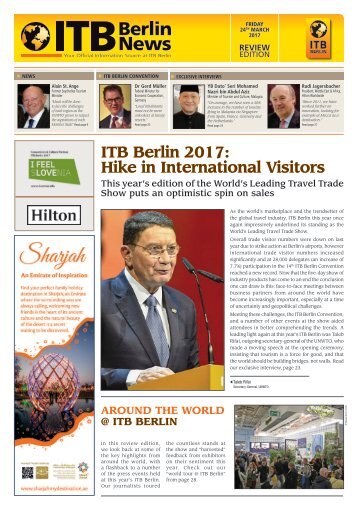
ITB Berlin News - Day 3
- Text
- Berlin
- Tourism
- Destination
- Global
- Heritage
- Cultural
- Hotels
- Unesco
- Sites
- European
- Www.cleverdis.com
22 SPECIAL FEATURE
22 SPECIAL FEATURE CULTURAL TOURISM UNESCO Protects Sites, Promotes Tourism While UNESCO preserves what matters most, their label also calls attention to the must-see attractions of the world What does the walled coastal town of Al Zubarah in Qatar have in common with Japan’s Mt Fuji? The same thing that makes Germany’s monumental water displays of Wilhelmshöhe even more special: they are all recently inscribed UNESCO World Heritage Sites. AT ITB BERLIN, GNTB ANNOUNCES IT WILL BE PUTTING GERMANY’S UNESCO WORLD HERITAGE SITES AT THE CENTRE OF ITS GLOBAL MARKETING ACTIVITIES IN 2014 The World Heritage programme, launched by UNESCO in 1972, identifies, lists and preserves many of the most highly valued sites of humanity’s shared natural and cultural heritage. Since that time 936 sites have been accredited and nearly half of these are located in Europe and North America. In Hall 12 at ITB Berlin, the German National Tourist Board (GNTB) says it will be putting Germany’s UNESCO World Heritage sites at the centre of its global marketing activities in 2014 under the banner ‘UNESCO World Heritage – Sustainable Cultural and Natural Tourism.’ Germany has earned 38 heritage sites and this puts it in joint fourth place with France in the list of countries with the most world heritage sites. Together, the two neighboring countries have an impressive 76 sites. The very diverse world heritage sites divide into the following different themes: historical old quarters, churches and abbeys, castles and palaces, works representing culture and spiritual heritage, parks, gardens and natural landscapes, industrial heritage and outstanding examples of architecture and design. You can see how diverse the range of heritage sites is by looking at a country like France, where the Pont du Gard (Roman Aqueduct) (1985) is listed alongside the Papal Palace and Historic Centre of Avignon (1995) and the Banks of the Seine in Paris (1991). From our human history, to our spiritual history, to the early history of our cities, the World Heritage Sites protect all that reflects the uniqueness of man and Earth. Their preservation, in turn, creates interest and drives tourism. Many national organisations - like the German National Tourist Board - find promotional opportunity in the UNESCO list. It’s like an international seal of approval. If it’s worth saving, then it must be worth coming to see. Yet no one person has ever visited all the UNESCO sites; the leading candidate for this Guinness World Records Book honour has visited only 808 sites so far. As an example, Surtsey is one of the most difficult sites to visit. An Icelandic island created by a volcanic eruption in the 1960′s, the Icelandic government made the island off limits to humans so they could see how the island naturally develops. Sometimes researchers are allowed to set foot on the island with a rare permit but for the rest of us there are only tour boats which sail past the island. In France, national and regional organizations will use the anniversary of UNESCO World Heritage inscriptions to draw renewed attention to sites like Pont du Gard which celebrates its 30 year anniversary in 2015. ITB BERLIN NEWS • Friday 7 th March 2014 www.itb-berlin-news.com
- Page 1: FRIDAY 7 th MARCH 2014 DAY 3 EXCLUS
- Page 5 and 6: NEWS 5 Destination Shopping Tourism
- Page 7 and 8: TRADE TALK 7 Getting the Best from
- Page 9: EXCLUSIVE INTERVIEW 9 Global Group
- Page 13: AFRICA MIDDLE / MIDDLE EAST EAST RE
- Page 16 and 17: 16 SPECIAL FEATURE MIDDLE EAST A We
- Page 19: AFRICA / AFRICA MIDDLE EAST REGION
- Page 24 and 25: 24 SPECIAL FEATURE CULTURAL TOURISM
- Page 26: 26 WHERE TO GOIN BERLIN Bars Marlen
Inappropriate
Loading...
Mail this publication
Loading...
Embed
Loading...
